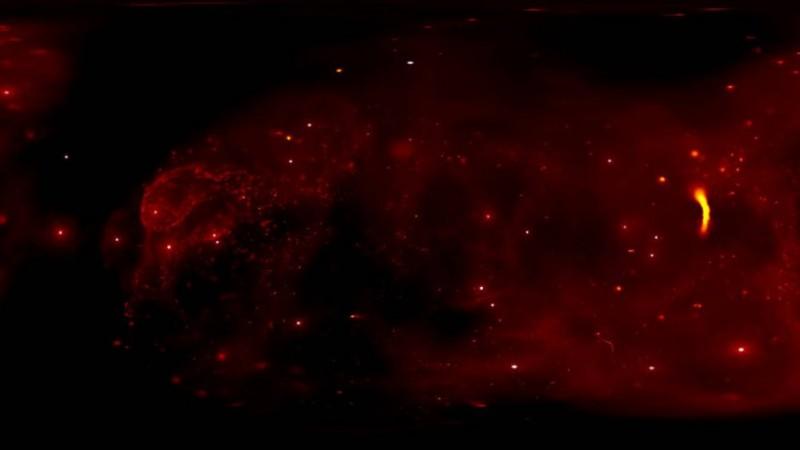
Astronomers studying the mysterious "diffuse radiation" coming from the centre of the Milky Way have, for over a decade, assumed that it was a result of Dark Matter particles, but recent research shows that the radiation is most likely coming from neutron stars.
Researchers from the University of Amsterdam/GRAPPA and the Laboratoire d'Annecy-le-Vieux de Physique Théorique say that radiation coming from rapidly spinning remnants of stars -- neutron stars are much more likely where all the radiation comes from.
There is a lot of gamma-ray radiation that comes from what is known as the "Galactic centre region", notes a release by the researchers. Using the Fermi Large Area Telescope (FLAT), they revealed that there is a mysterious diffusion and extended emission coming from the inner reaches of the Milky Way. This discovery was made almost 10 years ago and news of this emission reportedly generated huge excitement in the particle physics community because it was perceived to be the elusive signal from the self-annihilating dark matter particles found in the inner Galaxy.
A signal like this would offer confirmation of the existence of Dark Matter. So far, Dark Matter has not been proven beyond doubt. Astrophysicists know it's there. In fact, it is known as the most abundant substance in the universe, but so far the only proof of its existence comes from the observed gravitational effects it has on other objects. That is because Dark Matter is believed to be made out of new fundamental particles.

Also, proving dark matter exists would help determine the mass and other similar properties of dark matter particles.
The recent study, however, demonstrates that the best astrophysical explanation of excess emission coming from the Milky Way is new population in the Galactic bulge. There are thousands of rapidly spinning neutron stars also known as millisecond pulsars, which have so far escaped observations.
Understanding in detail the location and shape, as well as the combined frequencies of the excess emission is of vital importance for discriminating between the dark matter and astrophysical interpretations of the Galactic Centre's excess radiation, says Christoph Weniger, one of the researchers who conducted the study.
A different study by researchers at the University of Amsterdam and the Laboratoire d'Annecy-le-Vieux de Physique Théorique, a research unit of the French Centre National de la Recherche Scientifique, has found strong evidence that this emission originates from regions where there is a large amount of mass in the Galactic bulge and centre—'nuclear bulge'.
Their paper was first published in the journal Nature Astronomy.


















